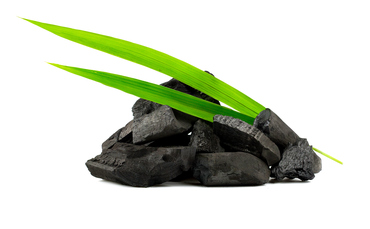Researchers from the College of Cambridge declare they’ve developed a low-cost, energy-efficient methodology for making supplies that may seize carbon dioxide (CO2) immediately from the air utilizing activated charcoal.
Researchers defined the strategy is just like charging a battery and as an alternative ‘fees’ activated charcoal – which is understood for its purification properties and sometimes utilized in family water filters – to take in CO2 from the environment.
By charging charcoal in a fabric like materials – which the researchers confer with as a ‘charcoal sponge’ – with ions that type reversible bonds with CO2, researchers discovered the charged materials may efficiently draw down CO2 immediately from the air.
Furthermore, researchers declare the charged charcoal sponge is probably extra vitality environment friendly than present direct air carbon seize approaches, because it requires a lot decrease temperatures to take away the captured CO2 so it may be saved. The outcomes of the crew’s analysis had been printed in journal Nature final week.
“Capturing carbon emissions from the environment is a final resort, however given the size of the local weather emergency, it is one thing we have to examine,” mentioned Dr Alexander Forse from the Yusuf Hamied Division of Chemistry, who led the analysis.
“The primary and most pressing factor we have got to do is cut back carbon emissions worldwide, however greenhouse gasoline elimination can be regarded as crucial to attain web zero emissions and restrict the worst results of local weather change. Realistically, we have got to do all the things we will.”
Direct air seize, which makes use of sponge-like supplies to take away carbon dioxide from the environment is one potential strategy to carbon seize. Nevertheless, researchers warned present approaches face important challenges, together with excessive prices costly and important vitality demand.
“Some promising work has been finished on utilizing porous supplies for carbon seize from the environment,” mentioned Forse. “We wished to see if activated charcoal is likely to be an possibility, because it’s low-cost, steady and made at scale.”
Activated charcoal is utilized in many purification purposes, equivalent to water filters, however usually it cannot seize and maintain CO2 from the air, researchers defined.
Nevertheless, Forse and his crew proposed that if activated charcoal may very well be charged – like a battery – it may very well be an appropriate materials for carbon seize.
When charging a battery, charged ions are inserted into one of many battery’s electrodes. Researchers hypothesised that charging activated charcoal with chemical compounds referred to as hydroxides would make it appropriate for carbon seize, since hydroxides type reversible bonds with CO2.
The crew defined how they used a battery-like charging course of to cost a cheap activated charcoal fabric with hydroxide ions.
On this course of they found the material basically acts like an electrode in a battery, and hydroxide ions accumulate within the tiny pores of the charcoal. On the finish of the charging course of, the charcoal is faraway from the ‘battery’ and washed and dried.
In accordance with the researchers, checks of the charged charcoal sponge discovered it may efficiently seize CO2 immediately from the air because of the bonding mechanism of the hydroxides.
“It is a new option to make supplies, utilizing a battery-like course of,” mentioned Forse. “And the charges of CO2 seize are already similar to incumbent supplies. However what’s much more promising is that this methodology may very well be far much less energy-intensive, since we do not require excessive temperatures to gather the CO2 and regenerate the charcoal sponge.”
To gather the CO2 from the charcoal so it may be purified and saved, the fabric is heated to reverse the hydroxide-CO2 bonds. In most supplies presently used for CO2 seize from the air, supplies have to be heated at temperatures as excessive as 900C, researchers defined.
Nevertheless, the Cambridge researchers declare the charged charcoal sponges they’ve developed solely require heating to 90-100C – temperatures which they added may be achieved utilizing renewable electrical energy.
The supplies are heated utilizing a course of often called restructure heating, which the researchers defined means they’re basically heated from the within out, making the method sooner and fewer energy-intensive.
Nevertheless, the researchers acknowledged that the supplies do have limitations which they added they’re engaged on.
“We’re working now to extend the amount of carbon dioxide that may be captured, and particularly beneath humid situations the place our efficiency decreases,” Forse defined.
The researchers mentioned their strategy may very well be helpful in fields past carbon seize, because the pores within the charcoal and the ions inserted into them may be fine-tuned into a variety of molecules.
Forse admitted that the strategy was initially a “loopy concept” the crew got here up with throughout the Covid-19 lockdowns.
“It is all the time thrilling when these concepts really work,” he mentioned. “This strategy opens a door to creating all types of supplies for various purposes, in a means that is easy and energy-efficient.”
The analysis was supported partially by the Leverhulme Belief, the Royal Society, the Engineering and Bodily Sciences Analysis Council (EPSRC), a part of UK Analysis and Innovation (UKRI), and the Centre for Local weather Restore at Cambridge.


